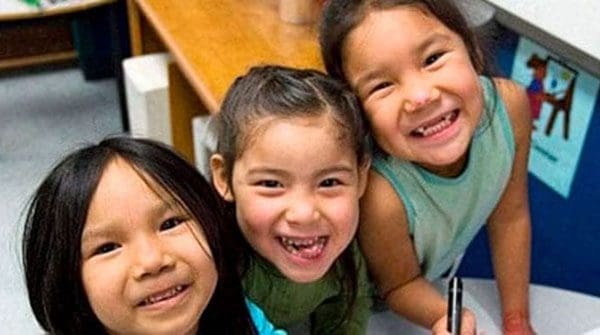 The government of Prime Minister Justin Trudeau has made extraordinary financial commitments to Indigenous peoples in Canada. The number and scale of the allocations over the past few years have been staggering, both in comparative and absolute terms. Last week, the federal government and First Nations reached an agreement on water supplies on reserves, estimated to cost $8 billion, only the most recent recognition of the nation’s multi-generational inability to address many of the basic needs of Indigenous people and communities.
The government of Prime Minister Justin Trudeau has made extraordinary financial commitments to Indigenous peoples in Canada. The number and scale of the allocations over the past few years have been staggering, both in comparative and absolute terms. Last week, the federal government and First Nations reached an agreement on water supplies on reserves, estimated to cost $8 billion, only the most recent recognition of the nation’s multi-generational inability to address many of the basic needs of Indigenous people and communities.
There is no question that the money is needed. It is equally clear that even larger contributions are required to address long-term gaps in fundamental infrastructure – Internet, roads, and particularly housing – and even more again to overcome serious deficiencies in healthcare, education, and social services. While the bill keeps mounting, there is no clear end in sight. And the expenses of addressing the yet undefined commitments implicit in the incorporation of the United Nations Declaration on the Rights of Indigenous Peoples into Canadian law must be added to the bill.
Several things stand out about the recent announcements. The Indigenous response has been muted, in large measure because of historic difficulties getting the money out of Ottawa’s hands and the cost to Indigenous communities associated with the bureaucratic measures needed to secure the funds. Furthermore, Canadian history is riddled with broken and unfulfilled promises. Indigenous communities must be forgiven for being less than totally confident in government compliance.
 Recognize, too, that the government is not planning toward a fixed fiscal target, an observation that applies equally to the Trudeau government’s approach to the broader economy and Canada’s general financial position. There is no publicly available financial plan for addressing all the legitimate needs of Indigenous communities, no scheduling for rolling out the funding, and no indication of the relative priority assigned to a broad range of government-funded initiatives. It was only in 2005 that Prime Minister Paul Martin’s $6 billion a year Kelowna initiative was criticized as being overly rich. In 2021, payments related to on-reserve water supplies alone will exceed the Kelowna plan.
Recognize, too, that the government is not planning toward a fixed fiscal target, an observation that applies equally to the Trudeau government’s approach to the broader economy and Canada’s general financial position. There is no publicly available financial plan for addressing all the legitimate needs of Indigenous communities, no scheduling for rolling out the funding, and no indication of the relative priority assigned to a broad range of government-funded initiatives. It was only in 2005 that Prime Minister Paul Martin’s $6 billion a year Kelowna initiative was criticized as being overly rich. In 2021, payments related to on-reserve water supplies alone will exceed the Kelowna plan.
In this country, the national government tends to use money as a surrogate for affection and real commitment. Anglo-Canadians have long believed that Quebec should be satisfied with a striking imbalance in federal-provincial transfers in the province’s favour and still do not understand the way Quebecois nationalism transcends mere fiscal arrangements. Alberta holds to the conceit that financial transfers from resource revenues should “buy” Quebec’s acquiescence. Much the same holds true with the Maritimes, major recipients of federal equalization payments who are supposed to be “grateful” for structural imbalances in the Canadian economy.
And so it has been for decades with Indigenous peoples. Commentators have often argued that Canada has been “generous” in its financial treatment of Indigenous governments, thus shifting responsibility for addressing Indigenous problems from the government to the communities. At this point, with the revelations about residential school grave sites stilling critics’ tongues for a time, we see a similar pattern. The government acknowledges historical injustices and sends money in steadily increasing amounts. The funds are urgently required, but big questions remain: Will the money be enough and will it address the underlying problems?
The answer to the first is that the government transfers are not sufficient. The scale of the fiscal challenge has not been properly defined, but addressing both immediate needs and multi-generational problems is a truly costly enterprise. Water supplies can be fixed – and it remains a national disgrace the country has lacked the political will to address the problem in a sustainable manner. But consider a fundamental challenge of greater significance: the decline and near disappearance of most Indigenous languages.
A path to prosperity for Indigenous communities by Rodney Clifton
Language loss is tied directly to government policy, including residential and day schools and to generations-old patterns of racial discrimination. Rebuilding languages – a formidable but not impossible task in most cases – will take unprecedented national resolve. The total costs would dwarf the spending on water supplies, and the task will take generations to complete. Instead of real and sustained determination, the country gets tinkering and small allocations of money, despite sustained efforts by the Assembly of First Nations and others to promote language renewal.
The fundamental problem is quite simple. Many of the crises facing contemporary Indigenous communities can be traced to one or more government policies, implemented with a combination of cultural superiority, paternalism and cultural arrogance, with a patina of real commitment to improving Indigenous lives. It is odd, in the extreme, to believe that government policies, programs and interventions will set right what over 150 years of federal intervention and interference created.
The government must act; the recent efforts are urgently needed. But these measures deal with the symptoms rather than the root causes of Indigenous marginalization. Until the latter are acknowledged and addressed, the money will not be sufficient. They are more bandages than vaccines.
Discussing the root causes requires an open conversation about Indigenous experiences. The lived reality of many Indigenous peoples, going back several hundred years, is dominated by racism and racial discrimination. Phrases like systematic racism are too simplistic to describe convoluted circumstances, particularly when so many institutions, companies and organizations are making real efforts at reconciliation and when so many Indigenous communities are recovering strongly.
But the inconsistency of the treatment of Indigenous peoples means that individuals never know when they will endure an act of racism or experience one of the countless examples of marginalization and discrimination. Government paternalism itself remains a fundamental flaw in the Canadian system. No substantial change will occur when Ottawa and its bureaucratic processes dominate Indigenous lives.
Money is not enough. That much is clear. What is required is more substantial and truly nation changing. The country needs to create a real partnership with Indigenous peoples. Canada must recognize Indigenous sovereignty. This is not as difficult as it sounds, for it simply grants Indigenous people authority over their own affairs on their own land.
Off-reserve populations present logistical and jurisdictional problems, but these can be overcome with creative thinking and government flexibility. Indigenous communities also need more land, either in physical territory or with the financial equivalent so that they can rebuild their economies. Furthermore, Indigenous governments need to set the time for transition to comprehensive self-government; there is no single “one-size fits all” approach.
There is an underlying problem here. Canadians will be profoundly upset if, five to 10 years from now, it becomes clear that massive government expenditures do not result in dramatic improvements in Indigenous well-being. Indigenous peoples deserve a much better future, one defined by real authority over their affairs, partnership with the peoples and governments of Canada, and the chance to shape their destiny. Money helps, but it is far from everything. Canada can and must do better.
Ken S. Coates is a Munk senior fellow at the Macdonald-Laurier Institute.
Ken is a Troy Media contributor. For interview requests, click here.
MLI would not exist without the support of its donors. Please consider making a small contribution today.
The views, opinions and positions expressed by columnists and contributors are the authors’ alone. They do not inherently or expressly reflect the views, opinions and/or positions of our publication.
© Troy Media
Troy Media is an editorial content provider to media outlets and its own hosted community news outlets across Canada.


